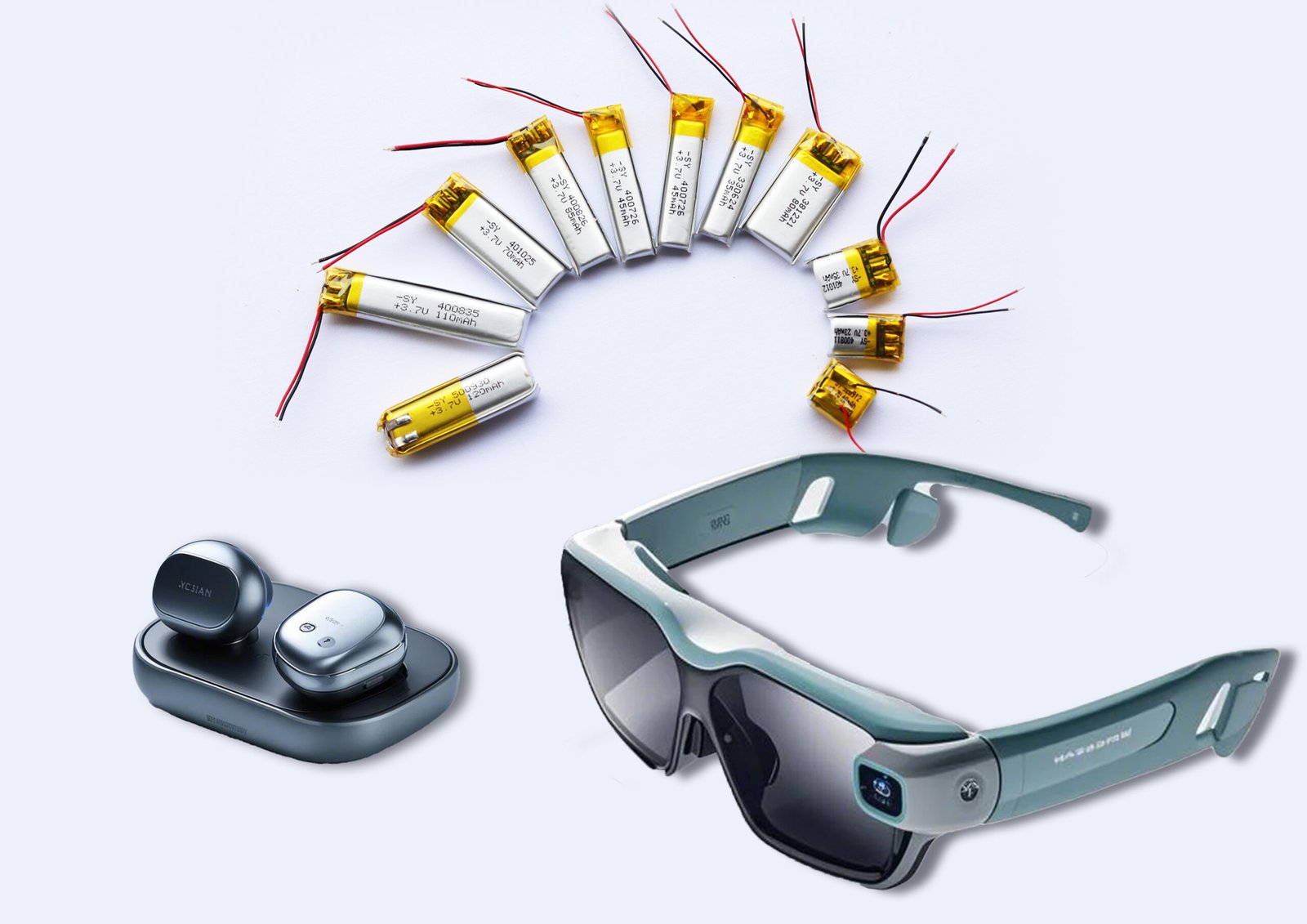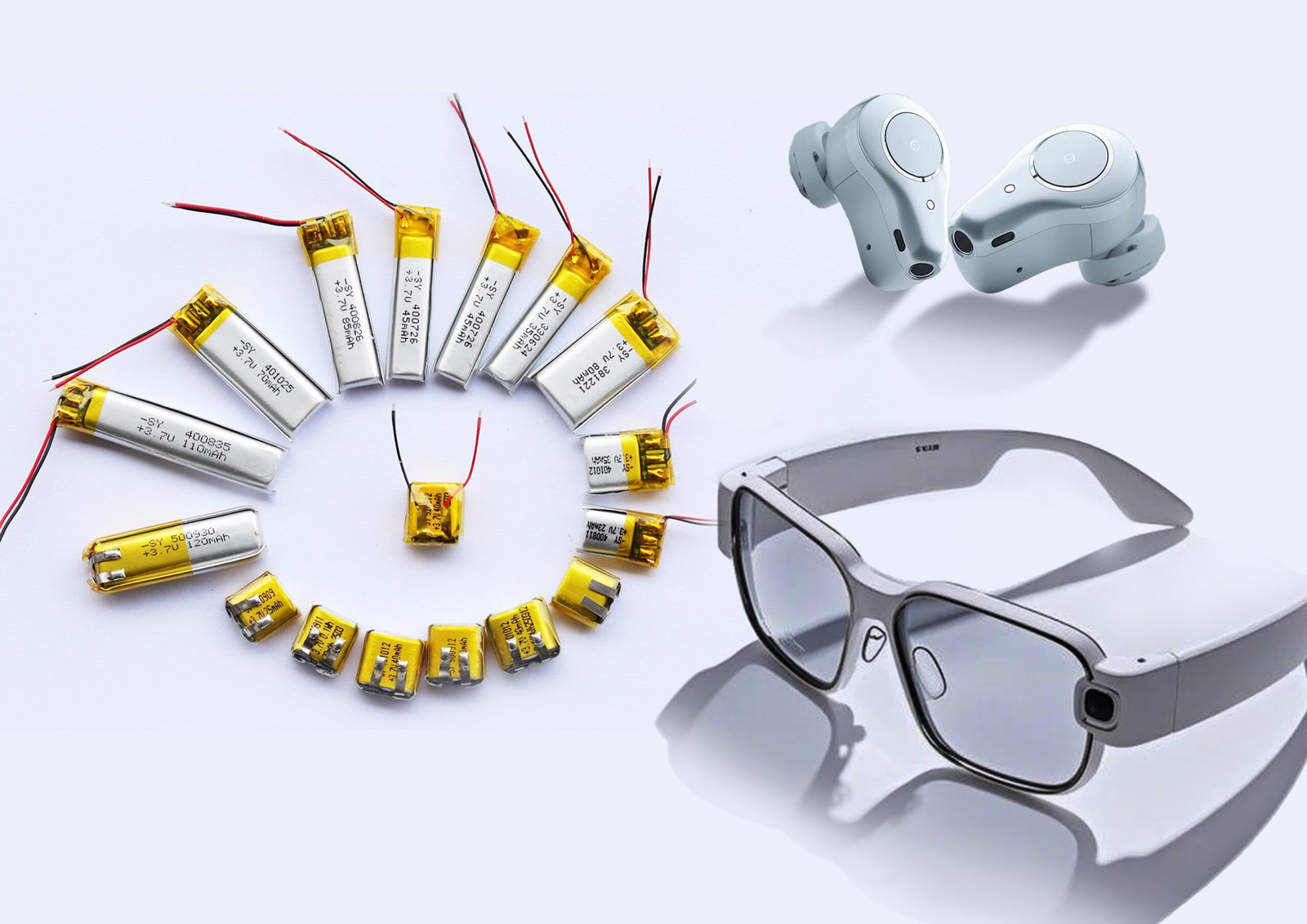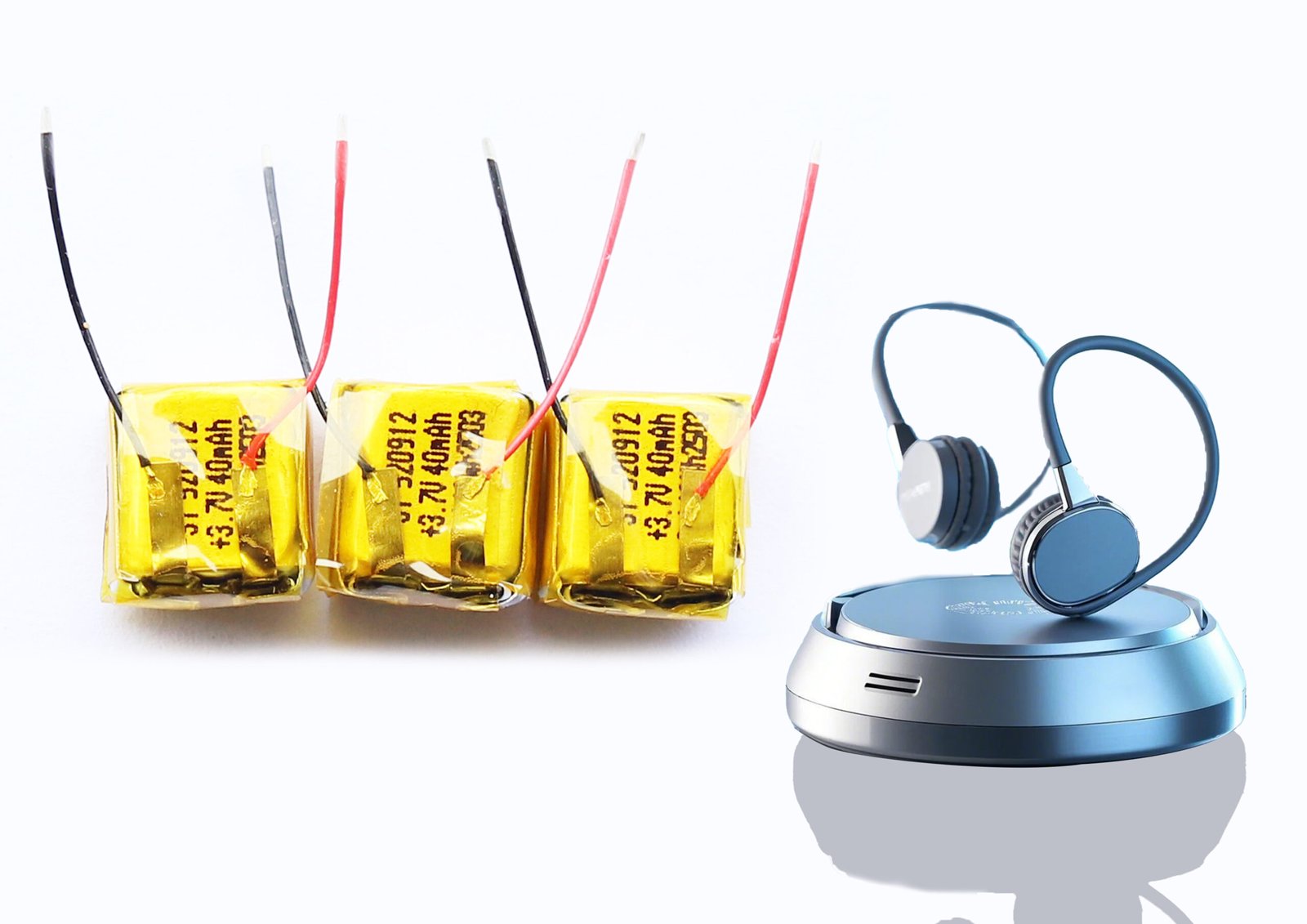
Choosing the wrong battery in smart glasses1 can mean bulky frames2, slow charging3, or worse — poor safety.
Lithium-ion batteries offer higher energy density4 and faster charging, while lithium-polymer batteries5 provide better flexibility, safety, and lightweight design for smart glasses6.
If you want your smart glasses to be slim7, long-lasting8, and safe, understanding battery differences9 is essential. Let’s compare them.
Table of Contents
ToggleContent
- Why Does Battery Type Matter in Smart Glasses?
- What Are the Structural Differences Between Li-ion and Li-Po?
- How Do They Compare in Energy Density?
- Which Battery Charges Faster?
- What About Battery Lifespan and Durability?
- How Do Size and Weight Affect Glasses Design?
- Which Battery Is Safer?
- How Do Cost and Scalability Compare?
- Conclusion
Why Does Battery Type Matter in Smart Glasses?
Powering a tiny wearable device10 needs more than just small batteries11 — it needs the right batteries12.
Battery type affects smart glasses’ comfort13, weight, runtime14, heat, and even the product’s market competitiveness15.

Smart glasses are worn directly on the head, close to sensitive areas like the eyes and brain. That’s why battery safety16 and size are more critical than in other devices. A heavy battery makes glasses uncomfortable. A hot battery can be dangerous. A slow-charging17 one ruins the user experience.
Choosing between lithium-ion (Li-ion) and lithium-polymer (Li-Po) affects not just technical specs, but also user satisfaction.
What Are the Structural Differences Between Li-ion and Li-Po?
Not all lithium batteries are built the same — and the way they’re made changes how they perform.
Li-ion batteries use a liquid electrolyte in a rigid casing, while Li-Po batteries use a gel-like polymer electrolyte in flexible packaging.

Key Construction Points
- Li-ion: Cylindrical or prismatic metal casing; liquid electrolyte; higher energy density
- Li-Po: Flexible pouch format; polymer gel electrolyte; lighter and adaptable shape
| Feature | Li-ion | Li-Po |
|---|---|---|
| Electrolyte | Liquid | Polymer gel |
| Casing | Rigid (metal/plastic) | Flexible (foil pouch) |
| Design flexibility | Low | High |
| Application fit | Phones, laptops | Drones, wearables, glasses |
How Do They Compare in Energy Density?
Want longer battery life in smaller space? That’s where energy density comes in.
Li-ion batteries typically offer 150–200 Wh/kg, while Li-Po batteries deliver 100–150 Wh/kg.

Energy density determines how long your smart glasses last between charges.
Li-ion batteries win here. That means longer AR sessions, fewer charges, and better performance for energy-heavy tasks.
However, for ultra-slim, lightweight glasses, the slightly lower energy of Li-Po may be a fair trade-off for flexibility and weight.
Which Battery Charges Faster?
When your glasses run low, you want fast recovery — not hours on the charging dock.
Li-ion batteries generally charge faster thanks to better ionic conductivity.

Typical charging times:
- Li-ion: 1–2 hours (depending on charger)
- Li-Po: 2–3 hours (slower but cooler)
Li-ion batteries support quick charge protocols (like QC, PD), making them ideal for users who need speed.
Li-Po batteries charge more slowly but produce less heat, adding safety.
What About Battery Lifespan and Durability?
You don’t want to replace batteries every six months — lifespan matters.
Li-ion batteries usually last 500–1000 cycles, while Li-Po batteries handle around 300–500 cycles.

That means Li-ion batteries last longer if you recharge frequently.
However, Li-Po batteries degrade more slowly when stored, making them ideal for products with intermittent use or standby modes.
| Metric | Li-ion | Li-Po |
|---|---|---|
| Cycle life | 500–1000 | 300–500 |
| Shelf life | Moderate | High |
| Performance | Long-term use | Short burst use |
How Do Size and Weight Affect Glasses Design?
No one wants chunky frames or heavy bridges. Batteries play a huge role in smart glasses design.
Li-Po batteries are thinner, lighter, and can be molded to fit tight spaces — perfect for sleek, stylish wearables.

Li-ion batteries come in fixed shapes, usually rectangular or cylindrical.
Li-Po batteries can be flat, curved, or segmented, letting product designers hide them in temples or bridges without sacrificing looks or comfort.
Which Battery Is Safer?
Worn on the face, safety isn’t just important — it’s personal.
Li-Po batteries are considered safer due to their solid structure, lower chance of leakage, and thermal resistance.

While both batteries require safety management systems, Li-Po designs are less prone to swelling, leaking, or igniting under stress.
That said, modern Li-ion batteries with advanced protection circuits (overcharge, thermal, short-circuit) can also be safe — but require tighter QC.
How Do Cost and Scalability Compare?
Your choice also depends on production and price.
Li-ion batteries are cheaper to produce and scale better for large orders. Li-Po batteries are pricier but support premium, custom-fit products.
| Cost Factor | Li-ion | Li-Po |
|---|---|---|
| Unit cost | Lower | Higher |
| Mass production | Easy | Moderate |
| Custom shape | Limited | Excellent |
Li-Po batteries are often used in high-end or niche smart glasses where comfort and design matter more than cost.
Conclusion
Li-ion vs Li-Po? It’s not about better or worse — it’s about fit.
Choose Li-ion for energy and fast charging. Choose Li-Po for safety, shape, and style.
Smart glasses work best when their batteries match their purpose.
-
Explore this link to discover the latest smart glasses that combine style, functionality, and safety features. ↩
-
Learn how to select smart glasses that are comfortable and stylish without the bulkiness. ↩
-
Find out which smart glasses offer the quickest charging times for your convenience. ↩
-
Understanding energy density is crucial for evaluating battery performance and efficiency, especially in portable devices. ↩
-
Exploring the benefits of lithium-polymer batteries can help you make informed choices for lightweight and safe electronic devices. ↩
-
Discover how smart glasses leverage lithium-polymer technology for enhanced performance and user experience. ↩
-
Learn how to select slim smart glasses that balance style and functionality effectively. ↩
-
Explore features that enhance the longevity of smart glasses, ensuring you make a wise investment. ↩
-
Understanding battery differences is crucial for choosing the right smart glasses that meet your needs. ↩
-
Explore this link to discover the most suitable batteries that enhance the performance and longevity of tiny wearable devices. ↩
-
Learn about the various types of small batteries that can optimize your wearable technology’s efficiency and functionality. ↩
-
Find out how to select the right batteries to ensure your wearable devices operate effectively and reliably. ↩
-
Understanding the comfort factors of smart glasses can help you choose the best model for your needs. ↩
-
Exploring runtime differences can guide you in selecting smart glasses that last longer during use. ↩
-
Learn how battery technology impacts the competitive landscape of smart glasses, crucial for informed purchasing decisions. ↩
-
Understanding battery safety is crucial for the development and use of smart glasses, ensuring user safety and comfort. ↩
-
Learning about the effects of slow-charging can enhance user satisfaction and inform better design choices. ↩

